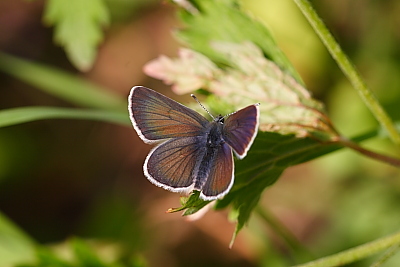
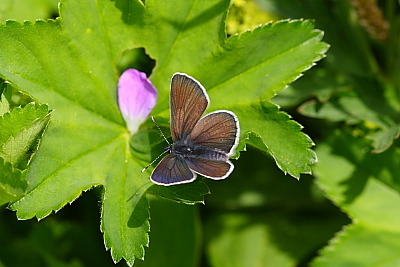
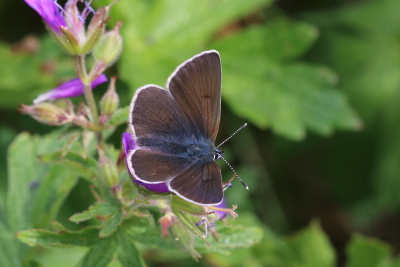
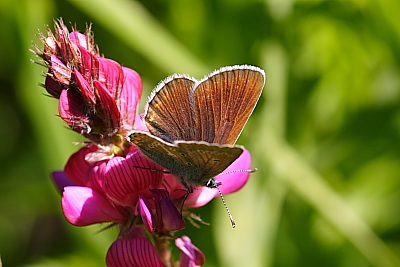
30367_male_Alpes-Maritimes_4Jul12
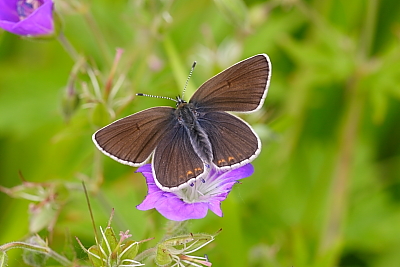
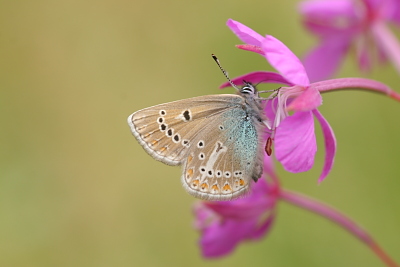
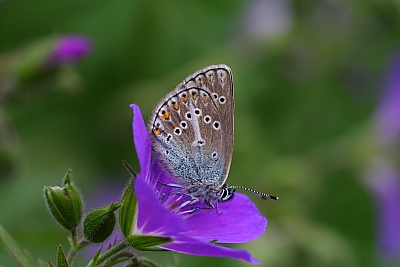
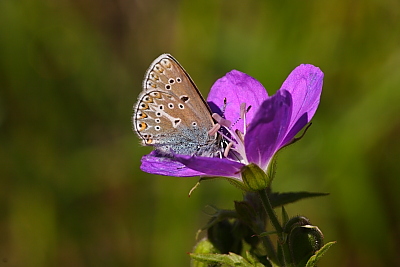
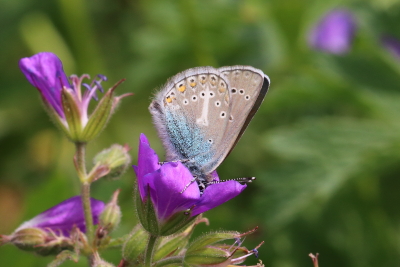
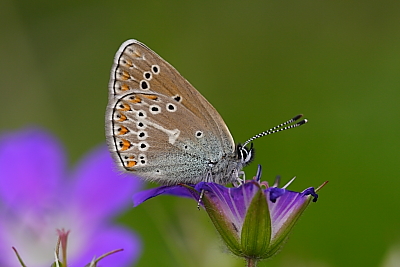
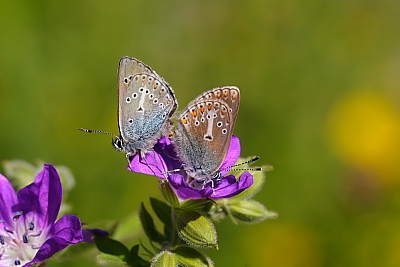
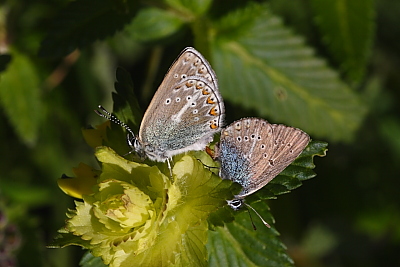
Geranium Argus (Aricia eumedon)
2024 photographs highlighted in yellow. Click on any photograph to go to an enlarged picture, or simply scroll down the page.
|
An altitude specialist, over 750m and nearly always a lot higher. The uppersides of both sexes are brown, the male being plain brown and having no blue scales or lunules at all, whereas the female is indicated by a few uph marginal orange lunules. The defining characteristic of eumedon is the unh white streak from the cell spot, along v5 to the post-discal spot, and sometimes beyond. The underside markings are more distinct in the female, which also usually has a deeper brown ground colour. It is usually tied closely to the larval hostplant, various species of Geranium, principally Wood Crane's-bill (Geranium sylvaticum). |
The converse is often true, in that if it is not sitting on a Geranium species, it is probably not eumedon. For an altitude butterfly, it tends to emerge quite early, from May onward, which may explain the degree of wear on the males in some of these photographs taken in July.
This species was previously known as Eumedonia eumedon. In 2010 it was reclassified as Aricia eumedon and in 2017 it was again reclassified back to Eumedonia eumedon. I'll give it a few years before changing the web page (and all the occurrences and links associated) as it is entirely possible that the taxonomists will change it again. |
| ref | sex |
observations |
alt. m |
| 30367 | M | a male, showing a much darker marginal region compared to the basic brown ground colour. | 1900 |
| 22249 | M |
a male. |
2040 |
| 45586 | M | a fresh male, a deep cold brown. 45588 is the underside. | 2090 |
| 25663 | F | a female, as indicated by the faint orange lunules on the uph. | 1900 |
| 36411 | F | a female. 36370 is the underside. 36411 is seen as it opened up in a brief spell of weak sun. | 2090 |
| 3084 | M |
an interesting Y-shaped discal spot on the unh. |
1875 |
| 33538 | M | a fresh male, roosting on G. sylvaticum in overcast conditions. | 1900 |
| 21454 | M |
on studying the magnified image, the end of the foreleg appears to be hooked, which confirms that this is a male. It is sitting on G. sylvaticum. |
1875 |
| 45588 | M | a rather lightly marked male underside. 45586 is the upperside, so the paleness of the underside is not a function of ageing. | 2090 |
| 36370 | F | a female, roosting in overcast conditions on G. sylvaticum. 36411 is the upperside. | 2090 |
| 21474 | PAIR |
a mating pair, female on the right. This shows the contrast between the undersides of the sexes, the male being rather greyer in ground colour and having rather less well-developed marginal lunules. The female is also fresher as is nearly always the case for mating pairs. They are on, I believe, G. sylvaticum. |
1875 |
| 25684 | PAIR | a mating pair, the female on the left, looking rather greyer and more lightly marked than the norm for female eumedon. The male looks as if it is on its last legs. | 1900 |
30367_male_Alpes-Maritimes_4Jul12
22249_male_Hautes-Alpes_14Jul10
25663_female_Alpes-Maritimes_11Jun11
36411_female_Valais, Switzerland_19Jul14
3084_male_Alpes-Maritimes_25Jul06
33538_male_Alpes-Maritimes_8Jul13
21454_male_Alpes-Maritimes_5Jul10
36370_female_Valais, Switzerland_19Jul14
21474_pair_Alpes-Maritimes_5Jul10
25684_pair_Alpes-Maritimes_11Jun11